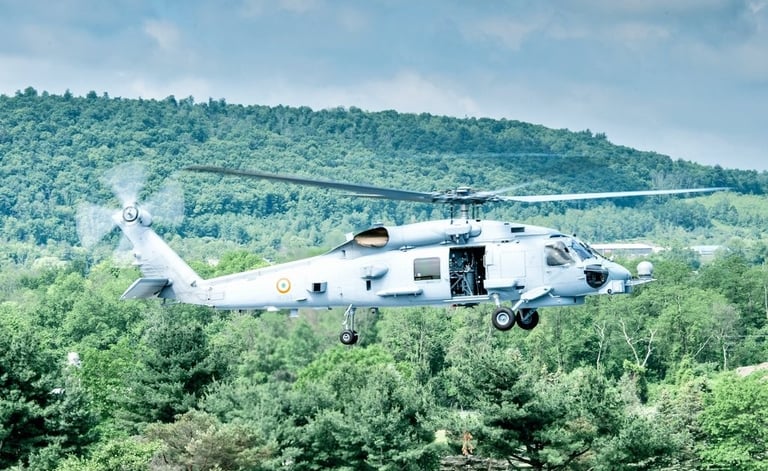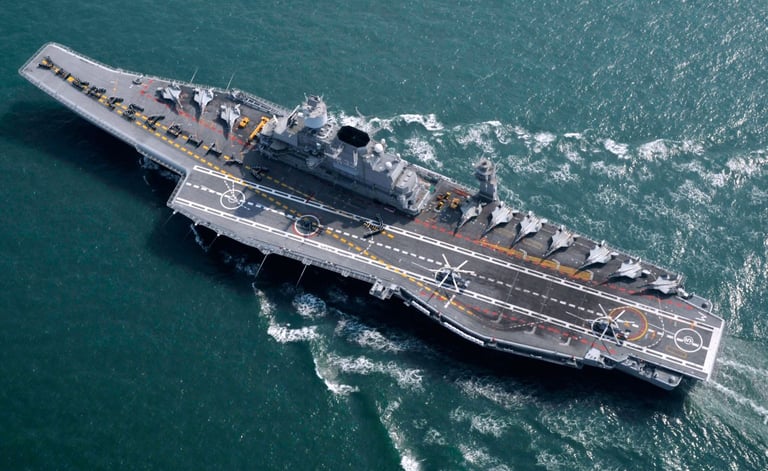The problems with Indian navy aircraft carriers
By Ishant Middha
(Economic problems)
Naval build-ups, because of their capital-intensive nature, are frequently more fatal to the originator than they are to the opposition.
Examples-
Admiral Alfred von Tirpitz’s build-up of the Imperial German Navy,
contributed to the German defeat in World War I, with no significant returns on the massive investment.
Similarly, Admiral Gorshkov’s expansion of the Soviet navy directly contributed to the fall of the USSR.
Both Tirpitz and Gorshkov were tactical geniuses but were unmitigated strategic disasters because they ignored
the military dictum of economy of effort where every action must extract a disproportionate cost from the opponent.


(No genuine need)
The navy forwards three reasons for its carriers:
*First, the Chinese naval build-up and forays into the Indian Ocean
*Second, to dominate the littoral and project power
*Third, to protect the sea lanes of communication (SLOC) and, as a corollary, deny China energy supplies in the event of war.
Not one of these reasons holds up to weight. The vast difference in the economies of China and India means that the former can counter our naval aviation assets many times over. Operationally, China’s naval fighter, the J-15, outclasses India’s MiG-29K. While Western naval fighters like the Rafale or F-18 are undeniably superior electronically, a cost difference of almost 10:1 in the Sukhoi’s favor presents an insurmountable quantitative challenge. To quote Stalin, “Quantity has a quality all of its own." This, in fact, is similar to the Falklands war where Harriers bested superior Argentine Mirages because Argentina failed to mobilize sufficient numbers or absorb high losses against the Harrier. Clearly, the quality-quantity matrix favor Chinese quantity over Indian quality.


Dominating the littoral with carriers is also a problematic proposition. A cursory glance at the Indian Ocean reveals two kinds of states here very powerful ones and very weak ones. Sending all three carriers against powerful countries like Saudi Arabia, the United Arab Emirates, Iran, Pakistan, Singapore and Australia would be suicidal, with each of these countries possessing the ability to tackle India’s naval fighters effectively.
On the other hand, even one aircraft carrier is a farcical overkill against countries like Sri Lanka, Maldives, Bangladesh, Somalia, Mauritius, Mozambique etc all. This means the Indian carrier build-up answers a question nobody asked.
Protecting SLOCs, and in wartime destroying China’s energy access, is best achieved by other assets. During peacetime, the best way to police the Indian Ocean is a fleet of cheap offshore patrol vessels. During wartime, the lack of littoral aircraft carriers means frigates with an excellent anti-submarine (ASW) component and air defence missiles are more than qualified to do the job. Yet, curiously, the critical ASW helicopter shortage is something the Indian Navy has neglected till purchase 24 MH-60R helicopters which are still insufficient.
Denying the Indian Ocean to the Chinese navy in the event of war will mean countering two main threats their nuclear submarines and aircraft carriers.


Chinese nuclear submarines will, in such a situation, challenge the Indian surface fleet and are best countered by a strong anti-submarine helicopter force for the fleet.
Chinese aircraft carriers, on the other hand, are best countered by Indian submarines. Submarines and anti-submarine components are also an area where India enjoys an advantage.
Chinese submarines are noisy and relatively crude and india should exploit it.Western submarines and helicopters that India has access to have superb stealth and electronic capabilities.
In war games, conventional Western submarines have routinely sunk US aircraft carriers while avoiding detection.
While submarines are not cheap, they are much cheaper than aircraft carriers, play to India’s strength and meet our requirement set in a much more affordable, versatile and sustainable way.
In the final analysis, if India wants to change the current situation where it punches far below its weight, a shift to air-centrism is the only answer. However, an ill-planned, operationally inadequate and economically catastrophic air-centrism of the Indian Navy variety will do far more damage to Indian interests, with gains being illusions at best.


